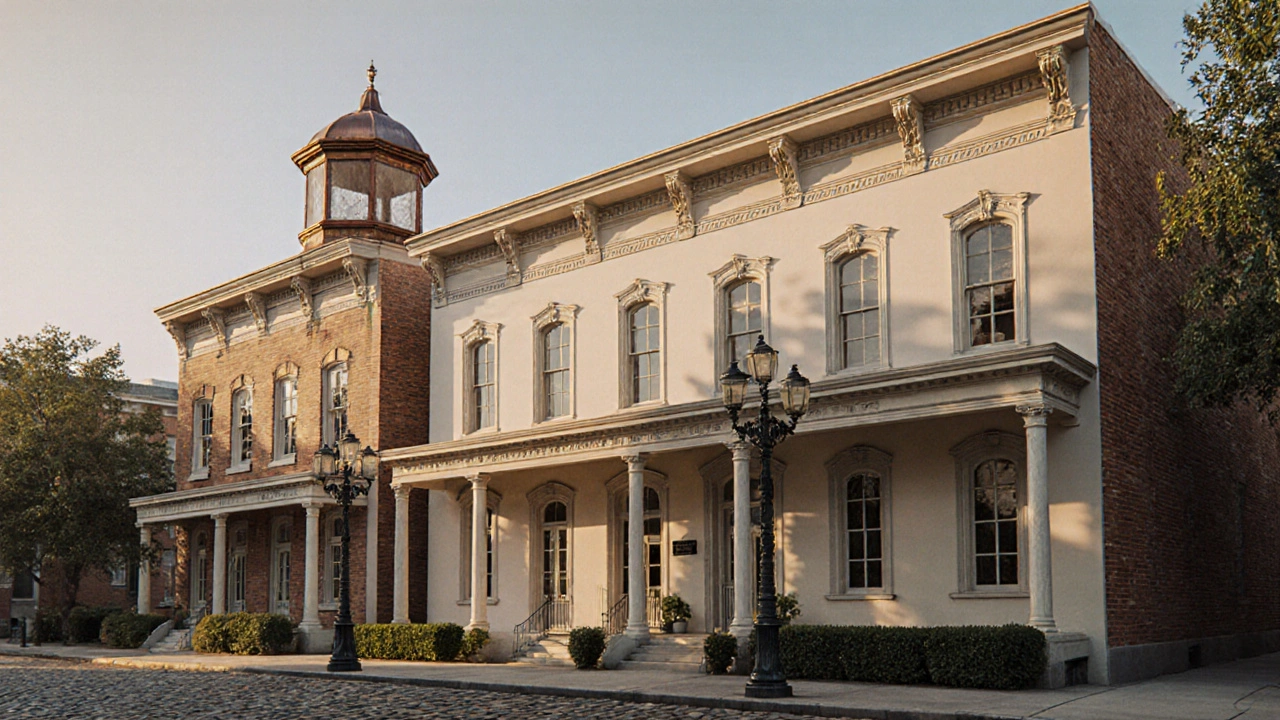Explore Italianate architecture's history, key features, famous examples, and modern design tips. Learn how this Victorian style blends form and function for timeless homes.
Victorian style
When you hear Victorian style, a 19th‑century architectural movement that blends ornate detailing with emerging industrial techniques. Also known as Victorian architecture, it was the backdrop for many of today’s most photographed historic houses.
One of the most recognizable offshoots is Italianate architecture, characterized by low‑pitched roofs, tall windows and decorative brackets under wide eaves. Another key cousin is Gothic Revival, noticed for its pointed arches, steep gables and intricate stonework. Both substyles sit comfortably under the Victorian umbrella, sharing the era’s love for visual richness.
What makes Victorian style tick?
Victorian style isn’t a single recipe; it’s a menu of options. Queen Anne brings asymmetrical façades, patterned shingles and wrap‑around porches, while Second Empire adds a distinctive mansard roof that maximizes attic space. These variations illustrate how the movement responded to local tastes, available materials, and the rise of the middle class. In practice, a Victorian home might combine Italianate brackets with Gothic arched windows, creating a layered visual story.
The era’s technology also mattered. Mass‑produced decorative millwork made elaborate trim affordable, turning what was once a luxury into a neighborhood staple. This democratization of ornamentation meant that even modest homes could flaunt Victorian flair, a fact you’ll see echoed across the posts below.
Victorian style encompasses Italianate architecture (low‑pitch roofs, decorative brackets), Gothic Revival (pointed arches, steep gables), Queen Anne (asymmetry, textured surfaces) and Second Empire (mansard roofs). It requires an eye for detail, access to patterned woodwork, and a willingness to blend historic motifs with modern needs. Designers today still draw on these elements to add character to new builds or restorations.
Because Victorian homes were built across continents, regional twists appear. In the United States you’ll find a lot of Italianate row houses in Chicago, while the UK favors more restrained Gothic Revival manor houses. The style’s flexibility allowed it to travel, adapt, and survive the test of time.
When you explore the collection below, you’ll see how each article breaks down a different facet: from the bold drama of Baroque‑inspired Victorian interiors to practical tips for preserving a historic roof. The posts also link Victorian aesthetics to broader movements like Renaissance revival and Beaux‑Arts, showing how the era fit into a larger design conversation.Ready to dive deeper? Below you’ll find guides that unpack the emotional impact of expressionist forms, the timeless charm of Dutch Colonial revival, and the sleek logic of Georgian symmetry—all while keeping Victorian style at the heart of the discussion. Whether you’re a homeowner, a design student, or just curious about architectural history, the range of topics gives you a full‑circle view of how Victorian architecture still influences our built environment today.

